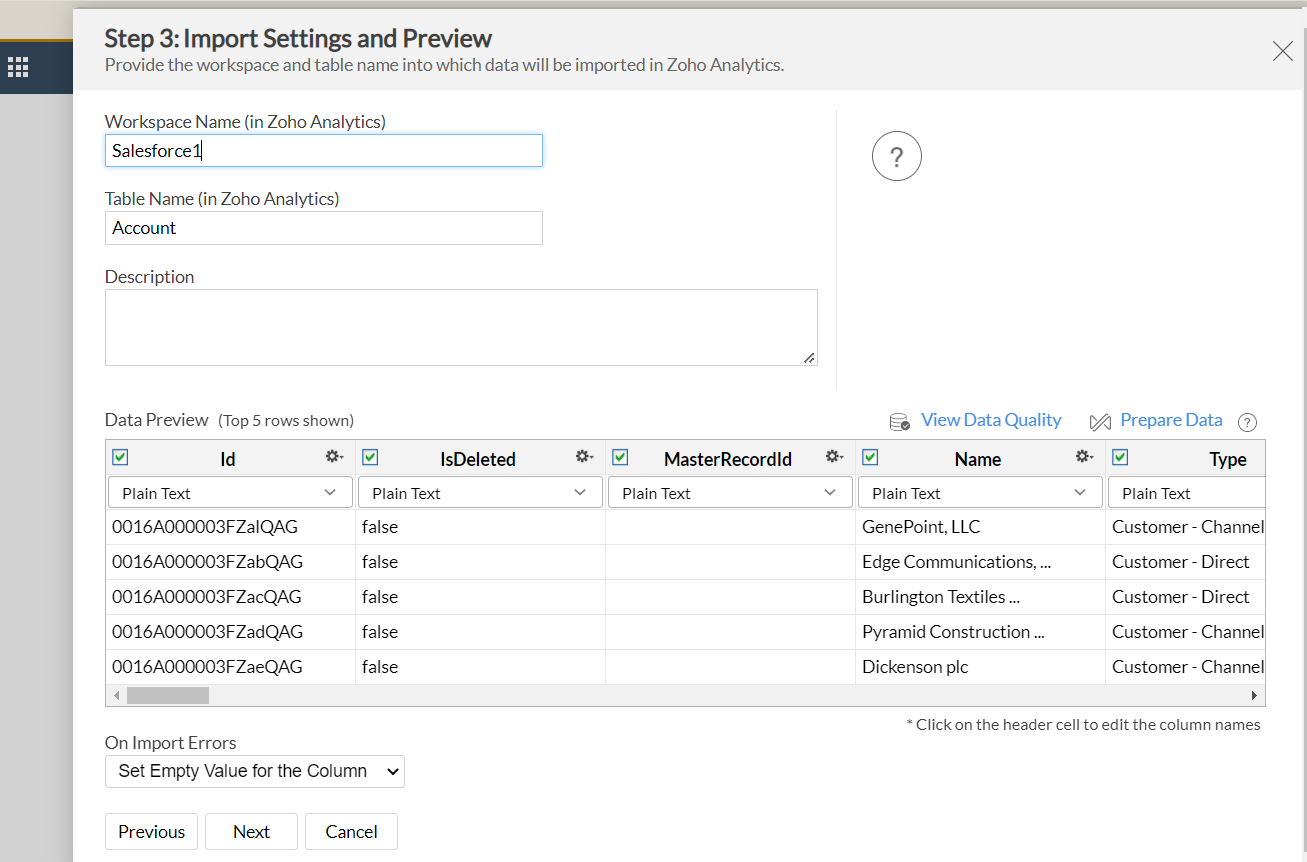Discover how a bimodal integration strategy can address the major data management challenges facing your organization today.
Get the Report →Build HCL Domino-Connected Dashboards Using Zoho Analytics
Use CData Connect Cloud to connect to HCL Domino from Zoho Analytics and import live HCL Domino data.
Zoho Analytics is a modern BI and Analytics platform that allows you to connect and analyze your data, while also creating visualizations and dashboards to discover hidden insights. When paired with CData Connect Cloud, Zoho Analytics provides instant, cloud-to-cloud access to HCL Domino data for reporting and analytics. This article demonstrates how to connect to HCL Domino using Connect Cloud and analyze HCL Domino data by creating dashboards in Zoho Analytics.
CData Connect Cloud provides a pure cloud-to-cloud interface for HCL Domino, allowing you to analyze HCL Domino data in Zoho Analytics — without replicating the data to a natively supported database. Using optimized data processing out of the box, CData Connect Cloud pushes all supported SQL operations (filters, JOINs, etc.) directly to HCL Domino, leveraging server-side processing to return the requested HCL Domino data quickly.
Configure HCL Domino Connectivity for Zoho Analytics
Connectivity to HCL Domino from Zoho Analytics is made possible through CData Connect Cloud. To work with HCL Domino data from Zoho Analytics, we start by creating and configuring a HCL Domino connection.
- Log into Connect Cloud, click Connections and click Add Connection
- Select "HCL Domino" from the Add Connection panel
-
Enter the necessary authentication properties to connect to HCL Domino.
Prerequisites
The connector requires the Proton component to be installed. Normally, Proton is distributed as part of the AppDev pack. See the HCL documentation for instructions on acquiring and installing Proton or the AppDev pack.
Once the Proton service is installed and running, you will also need to create a user account and download its Internet certificate. This certificate can be used to set the connector certificate connection properties.
Authenticating to Domino
- Server: The name or IP address of the server running Domino with the Proton service.
- Port: The port number that the Proton service is listening on.
- Database: The name of the database file, including the .nsf extension.
- SSLClientCertType: This must match the format of the certificate file. Typically this will be either PEMKEY_FILE for .pem certificates or PFXFILE for .pfx certificates.
- SSLClientCert: The path to the certificate file.
- SSLServerCert: This can be set to (*) if you trust the server. This is usually the case, but if you want to perform SSL validation, you may provide a certificate or thumbprint instead. See the documentation for SSLServerCert for details.
Additional Server Configuration
The connector supports querying Domino views if any are defined. Before views can be queried by the connector they must be registered with the design catalog.
Please refer to the Catalog Administration section of the AppDev pack documentation for details on how to do this.
![Configuring a connection (Salesforce is shown)]()
- Click Create & Test
-
Navigate to the Permissions tab in the Add HCL Domino Connection page and update the User-based permissions.
![Updating permissions]()


Add a Personal Access Token
If you are connecting from a service, application, platform, or framework that does not support OAuth authentication, you can create a Personal Access Token (PAT) to use for authentication. Best practices would dictate that you create a separate PAT for each service, to maintain granularity of access.
- Click on your username at the top right of the Connect Cloud app and click User Profile.
- On the User Profile page, scroll down to the Personal Access Tokens section and click Create PAT.
- Give your PAT a name and click Create.
- The personal access token is only visible at creation, so be sure to copy it and store it securely for future use. With the connection configured, you are ready to connect to HCL Domino data, import data, and create dashboards from Zoho Analytics using CData Connect Cloud.

Connect to HCL Domino in Zoho Analytics Using CData Connect Cloud
To establish a connection from Zoho Analytics to CData Connect Cloud, follow these steps.
- Log in to Zoho Analytics.
- Create a new connection and select Cloud Databases to open the connection modal.
-
Enter the following information:
- Database Type - select MS SQL Server.
- Endpoint - enter tds.cdata.com
- SQL Server Instance Name - leave this blank.
- Port - enter 14333
- Username - enter your CData Connect Cloud username. This is displayed in the top-right corner of the CData Connect Cloud interface. For example, user@domain.com.
- Password - enter the PAT you generated on the Settings page.
- Database Name - enter the Connection Name of the CData Connect Cloud data source you want to connect to (for example, Domino1).
- Click Next.
![Displaying configuration settings]()
- Choose the table that you would like to import from, e.g. ByName.
- A Data Preview of the table should pop up. Next, enter a Workspace Name and Table Name to be able to refer to in Zoho Analytics. Click Next.
- There is an option to schedule the import periodically. After configuring, click Create.
- Now, the import has been initiated. Click OK.
- View your new connection in the Zoho Analytics Explorer.
- Click on the new connection to see the table.
- Zoho Analytics can auto-generate dashboards for the user, as seen here:









We have successfully imported HCL Domino data into Zoho Analytics and created dashboards.
Get CData Connect Cloud
To get live data access to 100+ SaaS, Big Data, and NoSQL sources directly from your cloud applications, try CData Connect Cloud today!









